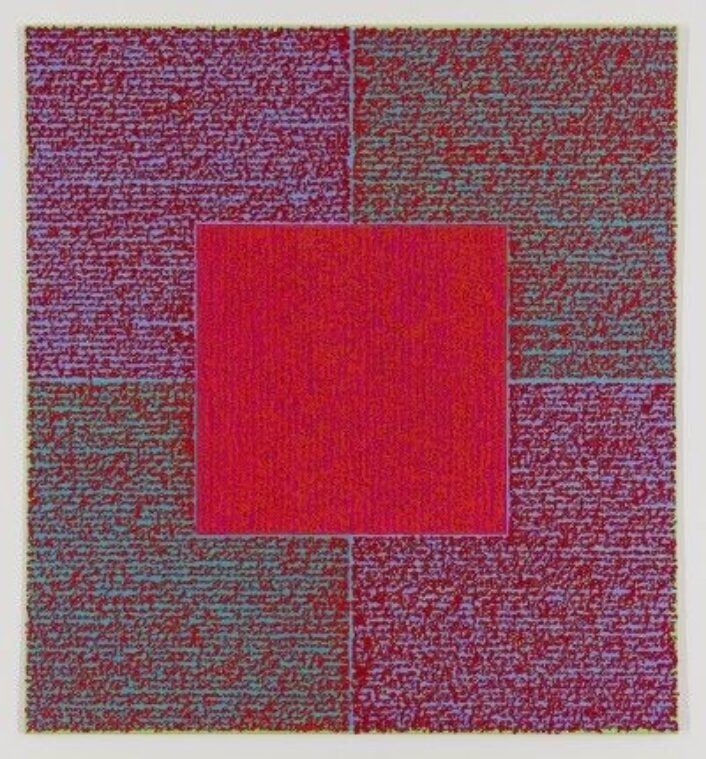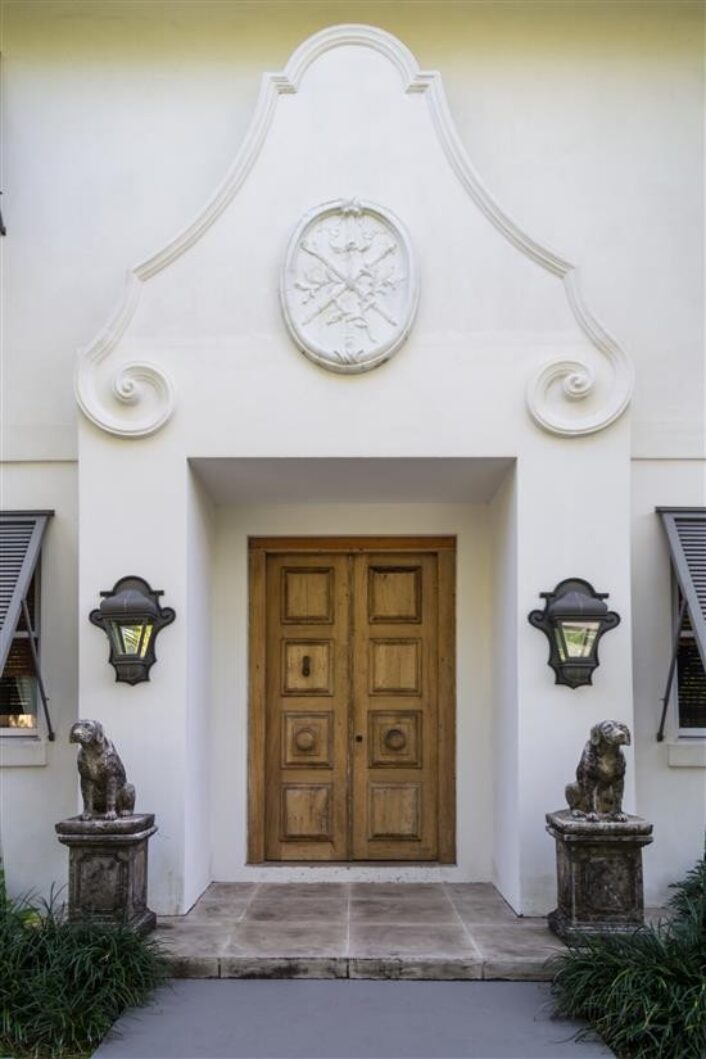Culture
Top galleries are leaving cities for the Hamptons and Palm Beach
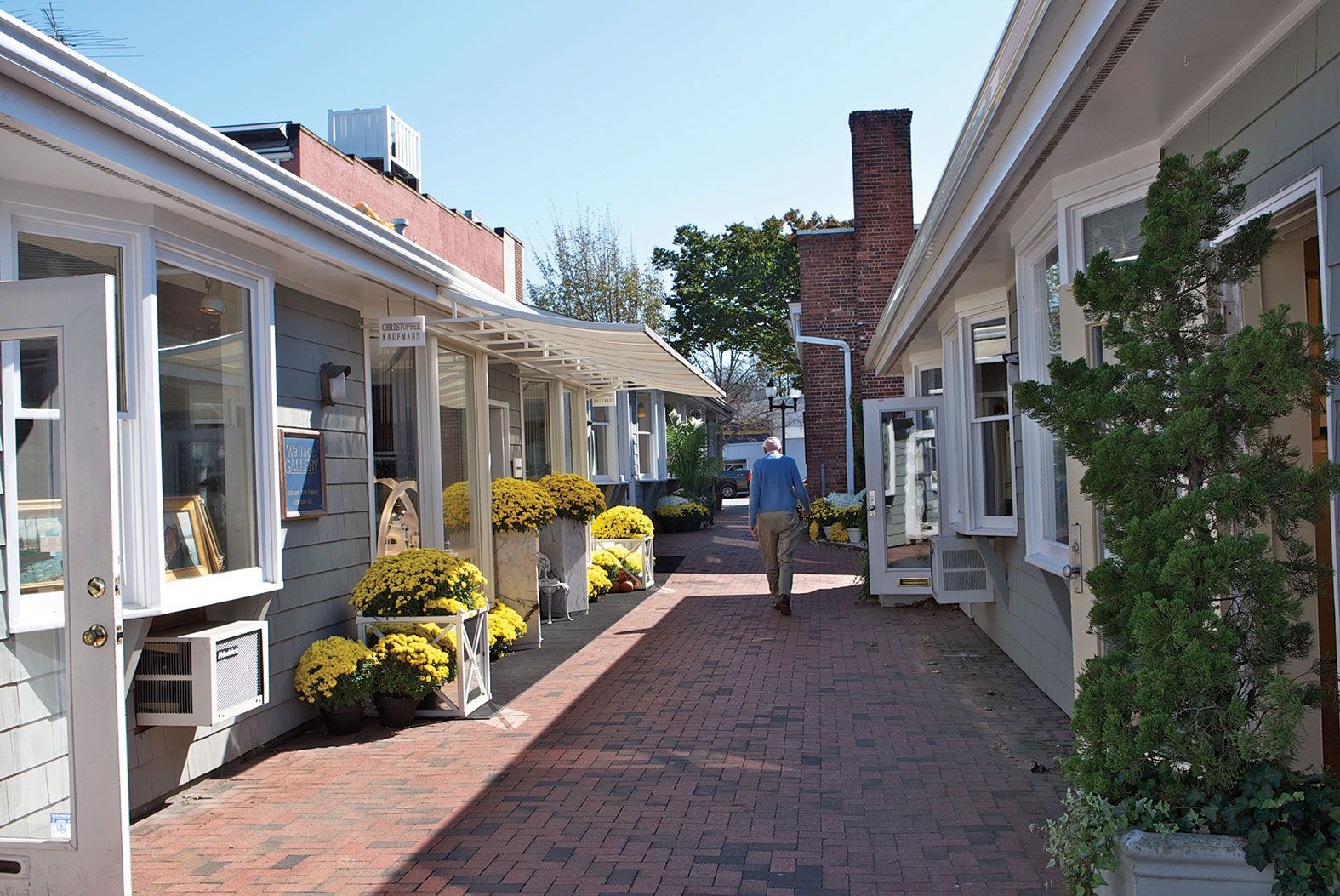
Pace Gallery was smart to follow their New York City collectors out of the city and to East Hampton as they opened a temporary space there over the summer.
Image courtesy of: The Art Newspaper, photographed by: Sylvia Muller
New York City is considered, by many, to be the “art capital” of the world when it comes to premier galleries. The city is also home to many well known shows such as the annual Armory Show and the world’s top auction houses. The art industry follows a rigid schedule throughout the year as fairs, auctions, and biennials happen in close succession and continuously all over the world. Some industry personnel often find themselves on the road for the majority of the year.
Sadly, the art industry was not immune to the horrors of the pandemic. Many galleries have permanently closed, museums have been forced to furlough and lay off a large number of their staff, and fair everywhere were cancelled. Kenny Schachter, a dealer and writer said (courtesy of Departures Magazine), “Basically the art market evaporated 85 percent overnight. There’s not going to be a V-shaped recovery anytime soon. There’s no going back.”

Pace Gallery in East Hampton exhibiting work by Yoshitomo Nara (right) and James Turrell (left).
Image courtesy of: The New York Times, photographed by: Karsten Moran
Among those top galleries that made the move, maybe temporarily, out of New York City was Pace Gallery, David Zwirner, Skarstedt Gallery, and Sotheby’s. The pandemic wasn’t necessarily the sole reason for the change, it simply accelerated what was already underway at galleries.
Online exhibitions have become the “main event” as a way to keep both art lovers and collectors engaged. In addition, online visits to artists in their studios increased, as a way to show new or in-progress works that would normally be a part of an art fair. Now, invitation-only private viewing room are becoming “the way” to purchase works. However, many “prime collectors” are older and not as comfortable at viewing and buying art online. These are the collectors that typically go to fairs and biennials, it is part of their yearly routine. But the older clients are now forced to think like their younger counterparts. Glenn Scott Wright, director and partner of Victoria Miro Galleries in Venice and London said (courtesy of Departures Magazine), “A lot of people are like, ‘We have never bought from digital images, but we are not going to gallery openings anytime in the future, so we have to do this if we want to buy.'”
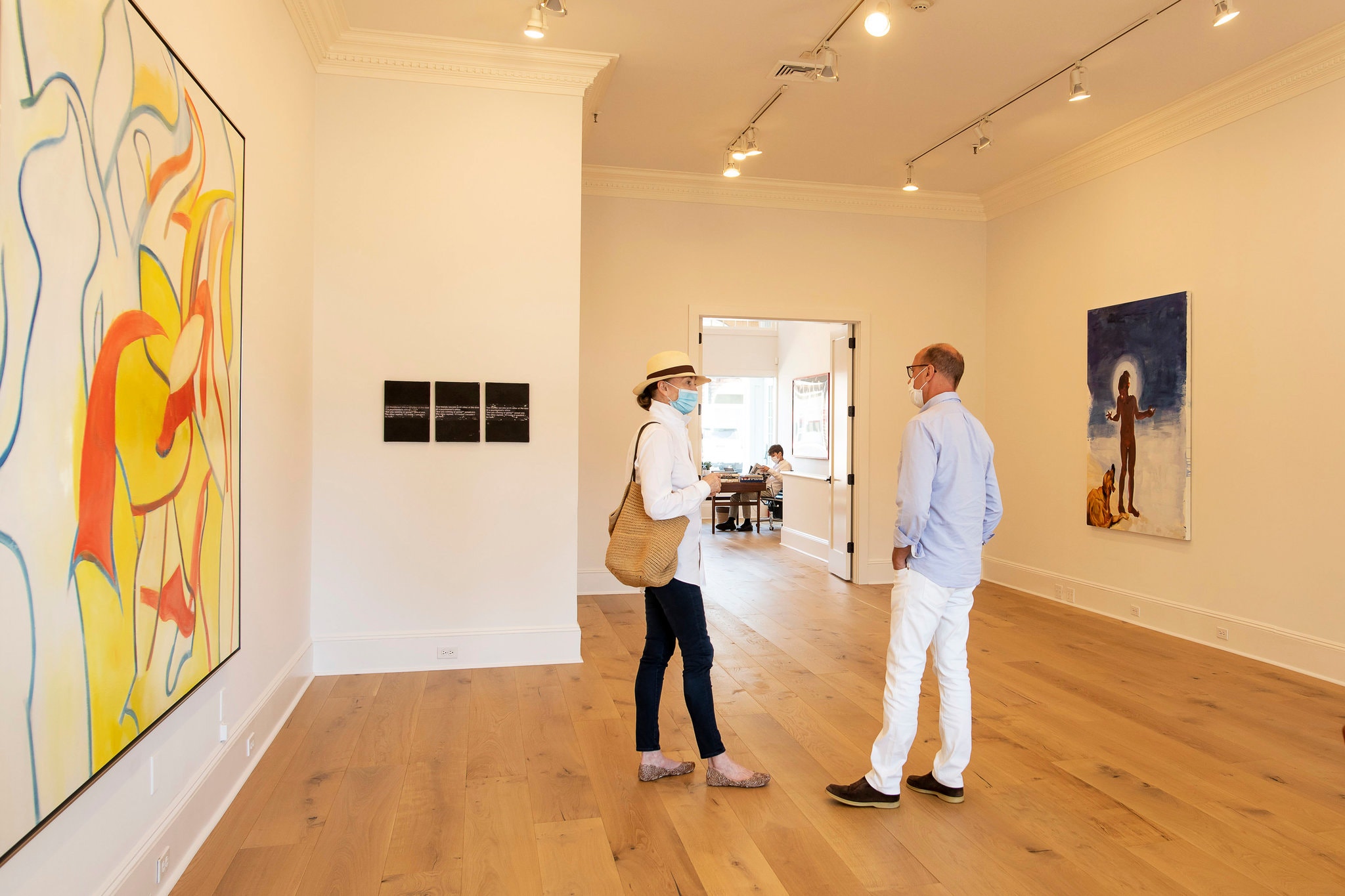
Per Skarsted at his new East Hampton gallery speaking to a visitor.
Image courtesy of: The New York Times, photographed by: Karsten Moran
In addition to the Hamptons, Palm Beach has also become home to three of New York City’s top galleries: Acquavella, Pace Gallery, and Sotheby’s. To have this access is very exciting for those collectors who relocated to warmer weather.
Pace Gallery, for example, will have several international solo shows and group presentations from artists including Tara Donovan, Kiki Smith, and the Israeli artist Michal Rovner.
Acquavella, a family-owned gallery with a 99-year history, will open it’s first ever physical space outside of New York City with an exhibition called “Masterworks: From Cézanne to Thiebaud”. On view through December 20th, the show presents work form Pablo Picasso, Wayne Thiebaud, and Henri Matisse. Finally, Sotheby’s recently opened a 2,700-square-foot space near Pace Gallery and Acquavella; the gallery will feature items for immediate purchase including fine art, luxury goods, and design.
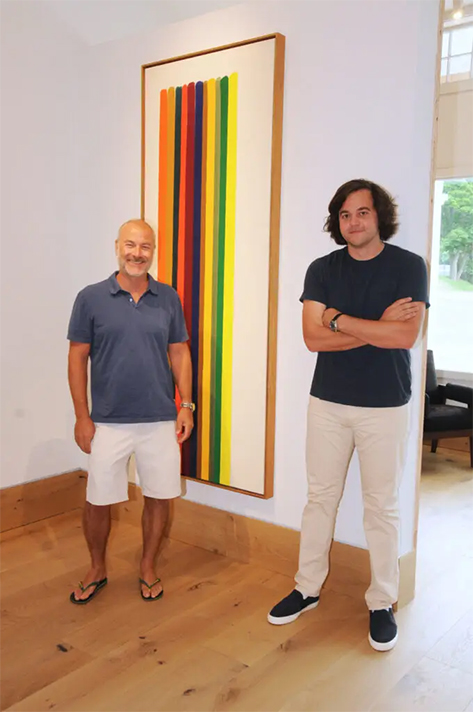
Global Head of Private Sales at Sotheby’s, David Schrader with Nicolas Cinque, Director of Private Sales standing in front of Moris Lous’ “Mira.”
Image courtesy of: Hamptons Real Estate Showcase
It appears as though many galleries will keep these “pop up” galleries permanently, or at least for longer than they first intended. Different than years prior, there has not been a great migration back to the city after Labor Day and thus, it makes sense for some galleries to keep up a presence in these high-end yet more low-key locations.
David Schrader, head of Sotheby’s private sales said (courtesy of Bloomberg), “We have quite a lot of clients in Palm Beach and we are seeing even more people who will be spending more time there due to Covid, due to taxes, due to not wanting to be in New York. We need to travel great objects to where people are.” Makes perfect sense!
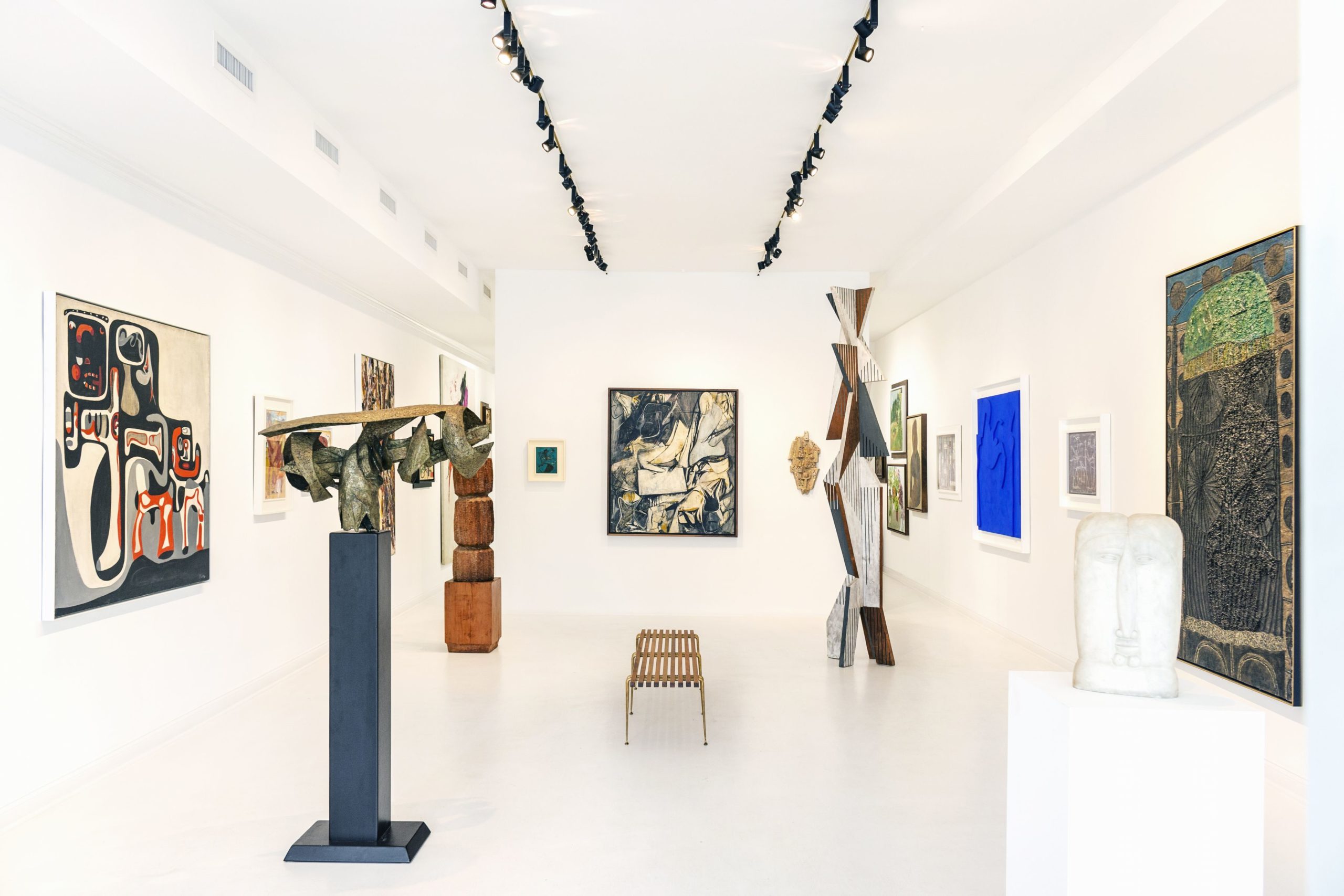
Eric Firestone Gallery’s exhibition of “Montauk Highway III: Postwar Abstraction” in the Hamptons from 2019.
Image courtesy of: Eric Firestone Gallery
Eric Firestone Gallery is another gallery that opened a Hampton’s outpost. Upon opening the gallery, they decided to pay homage to the storied history that connects the Hamptons and artists. In the 1950’s and 1960’s, the Hamptons became a place for similar minded artists who enjoyed gathering on the beach, at each other’s homes and studios, and in local bars to share ideas and garner inspiration from one another. This was a continuation to the creativity that was happening in New York City.
The show at Eric Firestone Gallery includes work from more than thirty artists who played an important role in the “Hamptons” scene. The Manhattan gallery that typically specializes in postwar American artists with a strong emphasis on people who were missing such as Mimi Gross and Joe Overstreet. However different from the city gallery, and having been a local gallery owner for over a decade, Firestone maintains that (courtesy of The New York Times), “If it’s a great beach day, people aren’t coming in. And the newcomers will figure that out.”
Time will tell… but the way life is looking now, these secondary outposts opened at precisely the right time!
